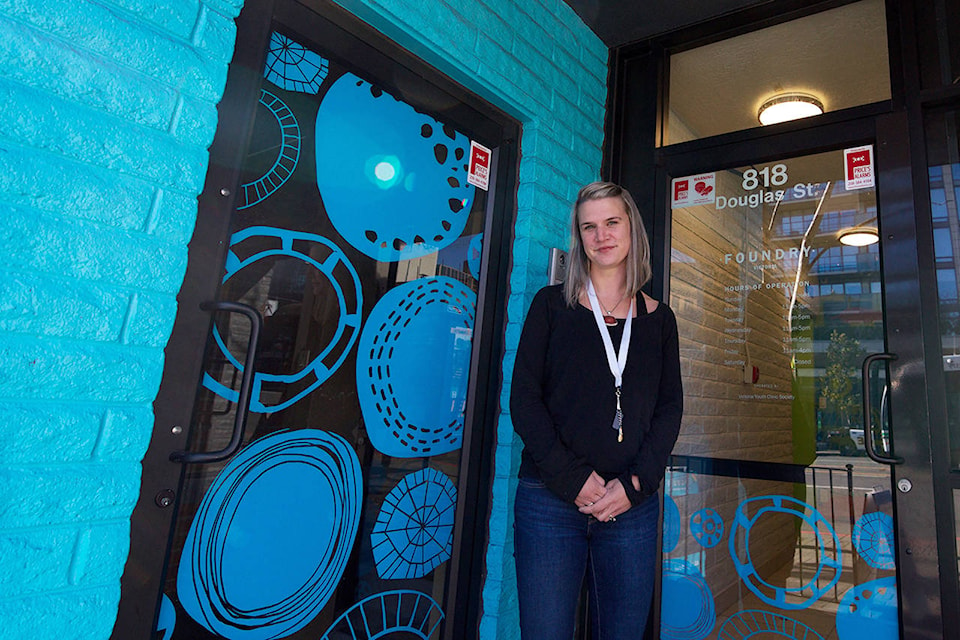The youngest person in B.C. to die of an opioid overdose in 2017 was 10 years old.
According to a report put forward by Representative of Children and Youth B.C., another 23 who died were under 18.
This led to an investigation and a report titled Time to Listen, which is calling for more youth-specific harm reduction resources, including a youth supervised consumption site.
“When we start to see patterns like that, it’s important to get underneath them and see what’s going on,” said Dr. Jennifer Charlesworth, representative for children and youth B.C.
Charlesworth and her team sought information by speaking to youth who use opioids across the province.
“The thing that’s still heartbreaking is to learn from the young people is that they use substances primarily to numb the pain from the trauma in their lives,” Charlesworth said. “For me as a parent and practitioner, I just think that really is a wake-up call. Who are we as a society that’s allowing kids to be in so much pain that they take themselves to death’s door?”
ALSO READ: Parents call for change to health laws after Oak Bay teen’s death
READ MORE: Moms of those killed by illicit opioids take to B.C. Legislature in call for action
She said that while there are many resources out there for adults, youth need a safe space to get support and not feel ashamed.
“The most important thing is the call for a more robust array of services. We need education, early intervention, support, mental health support, detox centres with drug management,” Charlesworth said.
“A lot of kids said even if they could go or have gone to safe consumption sites, they’re not safe because there are adults that are deeply into their addiction and exploitation is much more likely. We need to keep them safe.”
Victoria’s first supervised consumption site, The Harbour, opened in June, and while people can attend anonymously, Island Health has already identified two regular attendees under the age of 16, and another eight who are between 16 and 19.
ALSO READ: Pandora supervised consumption site has busy first month
For The Foundry-Victoria Youth Clinic, which services people aged 12 to 24, the need for more resources is paramount.
“Victoria has a very young substance use population,” said Lorna Mace, counsellor and social worker at The Foundry. “It’s not necessarily appropriate for someone who is 16 to share a detox site with someone whose 60.”
ALSO READ: Centre for youth seeking mental health and addictions support opens in Victoria
Mace said one of The Foundry’s most popular resources, either through direct prescription or a referral, is the Opioid Agonist Treatment (OAT), which works to wean young addicts off of opioids by substituting them with suboxone, methadone or a slow-release morphine called Kadian.
Mace said there are more than 30 Victoria youth using the OAT program, with the youngest being 14.
Many others may not be using opioids but could be dependent on Xanax, alcohol, codeine and cough syrup.
“They’re all numbing agents, it’s a way to escape,” Mace said, noting that many youths who come in say their drug of choice is heroin, which in most cases is actually found to be fentanyl.
BIG READ: Victoria woman shares her painful experience with opioid addiction
Having a more youth-specific site would offer a space to be free of shame and judgment, and also bridge traditional services, which typically switch from youth to adult at 19. Additionally, a youth-targeted clinic would ensure that the staff all have the correct knowledge or available resources specifically for youth.
While some parents may be afraid that a specific site would encourage youth to use drugs, both Mace and Charlesworth argued that more resources lead to informed decisions, and have never been proven to encourage drug use.
“There needs to be a place where youth can go that’s developmentally appropriate,” Charlesworth said. “I’d much rather see them there than in an alley or exploited.”
